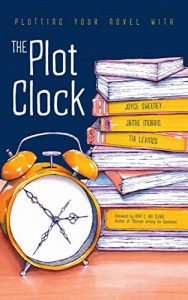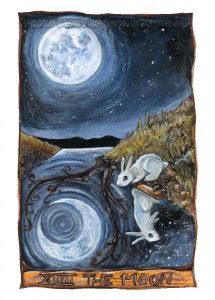Memoir Writing Prompt
THE QUEEN OF SWORDS IS A STRAIGHT-UP TRUTH TELLER. And she’s not worried about offending people, either. But, while this may very well make her the patron saint of memoir writers, she knows it’s not necessarily easy—nor safe—to follow her lead. Memoirists may be wary of putting their truth on the page. They may be concerned others will judge them. Or, they may feel guilt about revealing the harmful (or deceitful, immoral, or criminal) behaviors of someone close to them. They may even fear retribution from such a person. 
Writing the truth can be a serious—and, sometimes, risky—business. That’s why the Queen of Swords recommended I include this in my Terms and Conditions: Writing is deep work that comes with its own risks and discoveries. While I will endeavor to support you in your writing, I am neither a therapist nor an attorney. However, as you continue on your writing path, you may find the services of one or both offer you valuable guidance.
So, yeah. Serious business.
If you find yourself stymied when wanting to tell your story while avoiding upsetting someone else, the Queen of Swords may be able to help you slice through. Hers is the sword of discrimination. It separates the hard, nutritious kernels of truth from the chaff of words written to please others. And she brooks no nonsense from family, friends, or coworkers when she’s doing her honorable work.
At least, not in her first draft.
You see, we travel a long road between our first, exploratory draft—in which we record as much of the truth as we can remember and feel and understand—and our final draft, polished and ready to send out for publication. And there are many rest stops in the miles between those drafts. Those rest stops are perfect places for us to pause and consider whether to hit delete on passages that feel too hot, too pointed, too dangerous, or to keep them intact—until our next revision, at any rate.
Tarot writing prompt
With the clear-eyed Queen of Swords as an uncompromising example, try this: Pull out a memory that stings. Perhaps it’s of a secret you were told to keep. Or maybe it’s a memory of a trusted person hurting you or someone else. Or of something you did, something about which you carry shame. Or fear. Or both.
Whatever you’re ready to uncover, write about it as fully as you can—just for yourself, for the moment. You might need to do this in increments. Start with ten minutes. Then return for another ten-minute session … and another and another, until you have all the parts of the story and the accompanying feelings on the page.
Take as long as you need. Days. Weeks. Months. Years.
While you’re in the process of this memoir writing prompt, you might want to hide your notebook or camouflage the file you’re creating. Do so, if it will make you feel safer. And when you review what you’ve written, if it’s too much, too hot, you might decide to delete or shred the story in its entirety. You might also, as suggested above, consult with a therapist or counselor as you journey along this path. Do whatever you need to make you feel safer, protected, supported.
With these caveats in mind, then, if you have a wound in your writer’s heart, consider lancing it with the sword of truth. It’s your life. Write it down.
I’ll go first, okay?
This is a story I’ve feared sharing, both because I might be judged harshly for my behavior and because in it I point at my father’s difficult behaviors. It’s a double-memoir-whammy-bind!
What happened is this: A long-lost relative contacted my family (damn you, Ancestory.com!). This relative had a particular interest in meeting my father. But they were my long-lost relative, too. And I got there first. Then, I opened my mouth and toads and snakes fell out as I described my early life with my father, who, good points/bad points, could be violent, and unpredictably so.
Soon after, my father died. Without this person ever contacting him.
For the next several years, I ran a losing race with guilt. But one night, as I was circling the track yet again, a friend sliced to the heart of the matter. “Did you tell that long-lost relative the truth about your father?” she asked. “Your own truth? As honestly as you could”
Well, yes. I did.
“Then,” my friend said, “it is what it is. People make their own choices.”
She’s right. My father chose to act the way he did. I chose to disclose. The relative chose not to connect.
It is what it is.
So, while this story isn’t actually about writing down the truth (although, I have now written it down), it is about the risks we take when we decide to share our truth, and about the possible consequences of doing so.
The fear of such potential consequences keeps many would-be memoirists from writing their stories in the first place. Embarking on a memoir can raise a lot of questions, like: Whom will this hurt? How will I be perceived? Will I ruin relationships—either my own or those of the people about whom I write? Even if I’m telling the truth?
When I speak with a writer who faces questions like these, I never suggest they cast aside these considerations and just publish their raw truth—consequences and concerns and family be damned. But, first draft? The one only you will read? There, you can look your truth square in the eye and let “the vorpal blade [go] snicker-snack.” Then, in a cooler light, see whether or how or if it serves you to release that truth into the world.
Memoir writing resources
Mary Karr is a brilliantly honest memoirist (and poet). You might find her THE ART OF MEMOIR a helpful read.
The post “How True and Factual Does Your Memoir Have to Be? 5 Principles” on Jane Friedman’s blog offers up some memoiristic nuts and bolts for your consideration. It is written by Brenda Peterson and Sarah Jane Freymann, who co-authored YOUR LIFE IS A BOOK.
The National Association of Memoir Writers considers “Challenges and Truth in Memoir” in the linked article.
Hire a memoir writing coach. Get in contact with me to learn more!
***
Thanks to U.S. Games Systems, Inc., for kind permission to use the image of the Queen of Swords from the RIDER WAITE (SMITH) TAROT.
 common-sensical: I write to communicate, or farther-fetched: I write because the fairies want to speak to me, and when I scribble fast enough, they take over my pen and let me know what they have to say.
common-sensical: I write to communicate, or farther-fetched: I write because the fairies want to speak to me, and when I scribble fast enough, they take over my pen and let me know what they have to say. 









